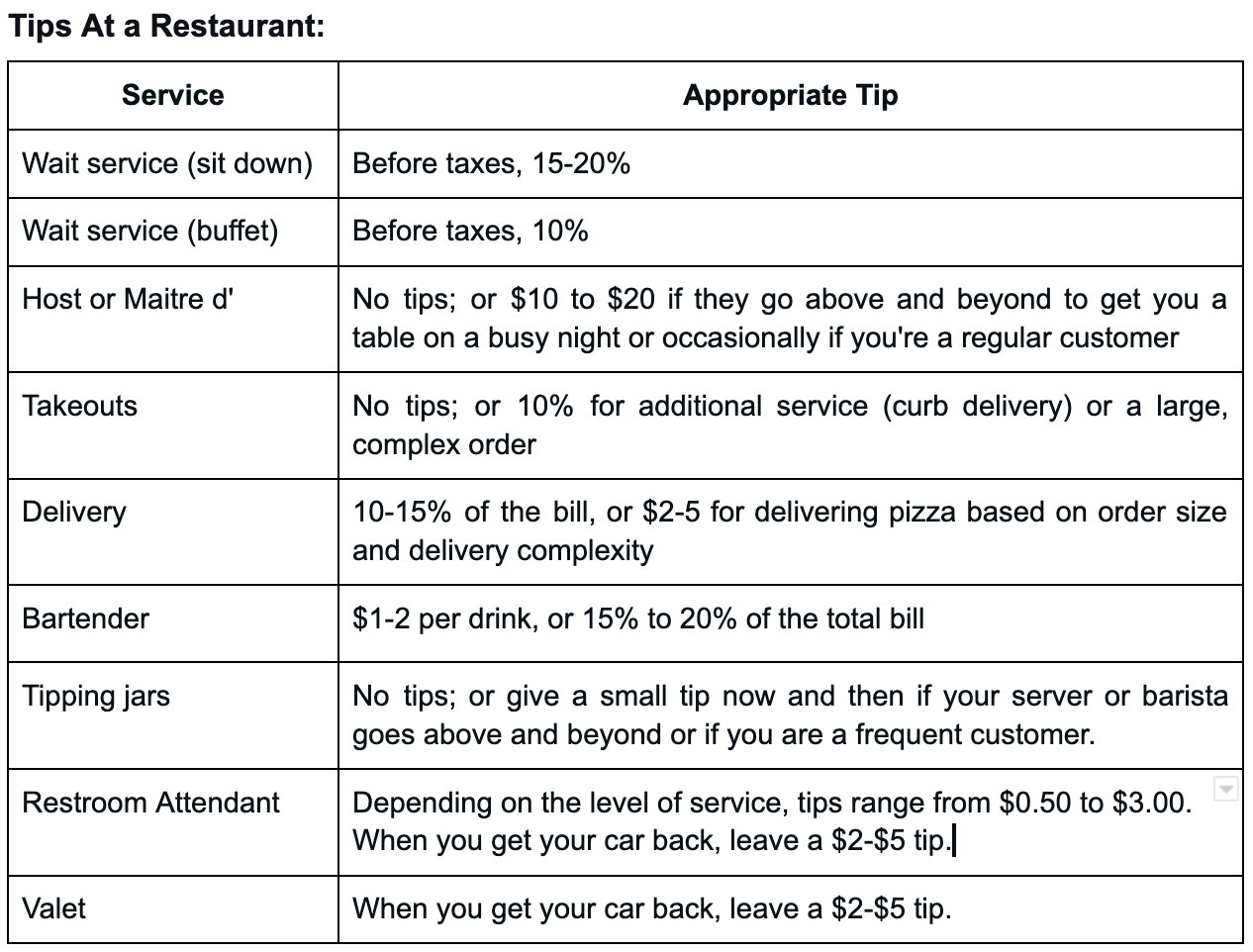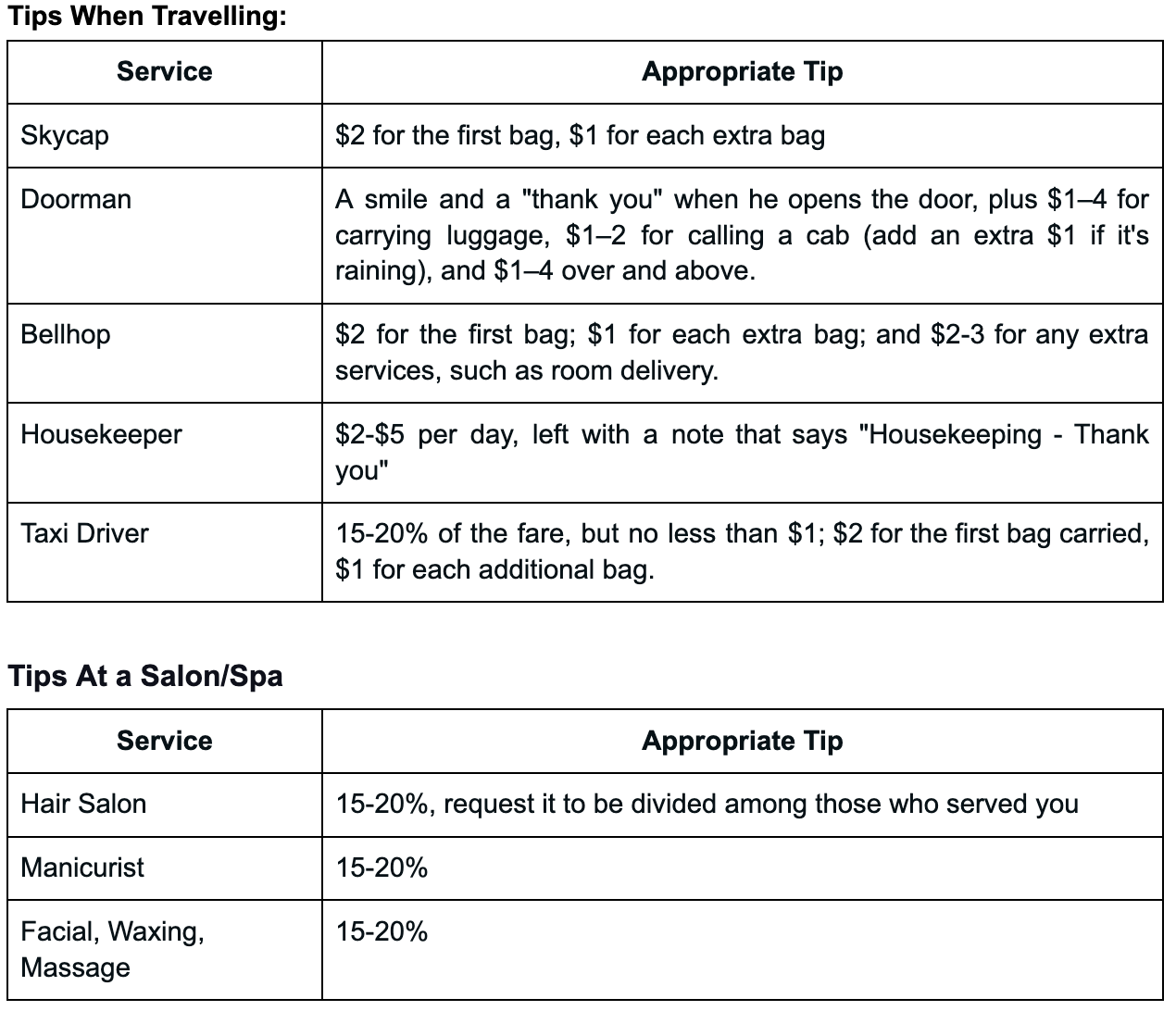Has Tipping Culture in North America Gone Too Far?
Tipping is a subject that frequently mystifies foreign visitors to North America. If you're unfamiliar with the concept, tipping is when a customer gives extra money to a service worker on top of the agreed-upon price for the service.
In the United States, it is customary to tip at restaurants and many service workers, including baristas, attendants, hairdressers, and massage therapists. So what makes tipping such a part of the culture in North America? Has it gone too far? Part of the answer may lie in the history of tipping.
A Little Background on Tipping
Although tipping is now widely accepted in North America, it wasn't always the case. The country's wealthiest citizens first popularized the practice of leaving tips in the 1860s, but most diners found it condescending and classist.
For instance, in 1897, The New York Times called tipping "the vilest of vices," and Mark Twain added his comment, saying, "We pay that tax knowing it to be unjust and an extortion." In 1915, six U.S. states outlawed tipping, only to bring it back eventually.
In the 1900s, tipping became common practice. According to speculation, the aristocracy played a role in the practice's acculturation from Europe. Following their travels to Europe, where tipping was expected, people wanted to stand out from their peers by appearing more sophisticated and knowledgeable.
Maybe they got a little carried away with the whole thing because Americans were, and still are, critiqued by Europeans for overtipping. However, there is a good reason why Americans still tip more than Europeans.
When the U.S. Congress passed the so-called "tipping credit" in the 1960s, it allowed employers to pay employees less than the minimum wage if they received tips. This means that workers walk home with meagre paychecks and depend on tips to make ends meet.
Sadly, it is still true today in many states. In fact, tipping generates $47 billion annually in the U.S. food industry alone. But not everyone who receives a tip may depend on it.
The Pros and Cons of Tipping: Should you tip?
The strongest argument against tipping is that it encourages inequality, racial and gender biases, and significant pay differences. A New York Times article says younger blonde women receive more tips than older brunettes.
Tipping can lead to sexist interactions between male customers with money and female servers. In the ride-sharing industry, female drivers receive 12% more tips than male drivers. Additionally, Latino and African-American servers make considerably fewer tips than white servers.
Tipping also causes significant pay gaps within the hospitality sector. Employees who work with customers directly make a lot more money than those who work behind the scenes (line cooks, dishwashers). Danny Meyer, a well-known restaurant owner in New York City, claims that his tip-earning staff earns 2.4 times as much as their non-tipped counterparts in the back of the house. Many states in the U.S. do not permit tips to be accumulated and distributed among back-of-house employees, further worsening the pay differences.
Tip requests are becoming more common, especially with the help of newer POS technology that promotes tipping. Similar tipping options are available when using mobile apps and touch-screen tablets when making payments. These options typically range from 15% to 25%, or "no tip." According to some, this makes the tipping decision more anxious and under social pressure.
The problems mentioned above, however, can be solved with a fair and consistent wage for all. This can be done by effectively integrating gratuity into the prices of the products or services.
But tipping does have a benefit, though. A gratuity-based structure, for example, encourages employees to go above and beyond to deliver excellent customer service. This is backed up by research, which shows that when restaurants stop accepting tips, the quality of the service suffers. Furthermore, servers might consider promoting more pricey items to customers to increase the final bill and, consequently, the tip, which is a bonus for restaurant owners.
Then again, the other option available than tipping, known as hospitality-included pricing, comes with its particular bundle of issues, the most noticeable of which is sticker shock. People are now used to seeing lower prices with a tip added rather than increased prices that already incorporate the tip. Due to this perception alone, higher prices discourage customers from visiting, even though they pay the same amount.
Did The Pandemic Raise Tipping Expectations?
Even before the pandemic, North Americans already had an unspoken expectation of giving servers tips. But the tipping culture went through a dramatic, sudden change post-pandemic, with many establishments expecting higher tips from customers.
During the pandemic, many businesses closed. Even when the protocols were lifted, it was a tough battle for them to get back on their feet—with limited customer capacity, extra expenses, and increased operating expenses due to inflation.
It's been a pain for some consumers, and many even argue that employees' wages should be increased instead. However, many businesses would rather request higher tips for an apparent reason—they won't need to shoulder higher costs.
It's safe to say that while many customers are still happy to give higher tips, especially for good service, many also feel that it's a pressured responsibility. For instance, upon payment, it's been a practice for many businesses to ask if there will be a tip, which is nevertheless a social cue that you should. Overall, the "unspoken" standard for tipping has increased to around 18 to 25 percent.
How much are you expected to tip?
Typically, tipping is associated with restaurant servers. However, there have been many changes before and after the pandemic. Let's go over how to tip and how much for common services.


Final Say
Tipping is a hotly debated topic in North America. Over the years, it has become more common to tip in various businesses, including cafes, bakeries, food trucks, and quick-service restaurants. And many people still debate on when who, and how much to tip.
The issue of whether tipping has gone too far depends on how we see it. Many now view tipping as social pressure, especially with online payments or new POS that leaves them a little option for tipping. While others still enthusiastically tip for the sole reason of thanking those who served them. With all pros and cons of tipping, we can only continue to debate whether we need it on the system or not.